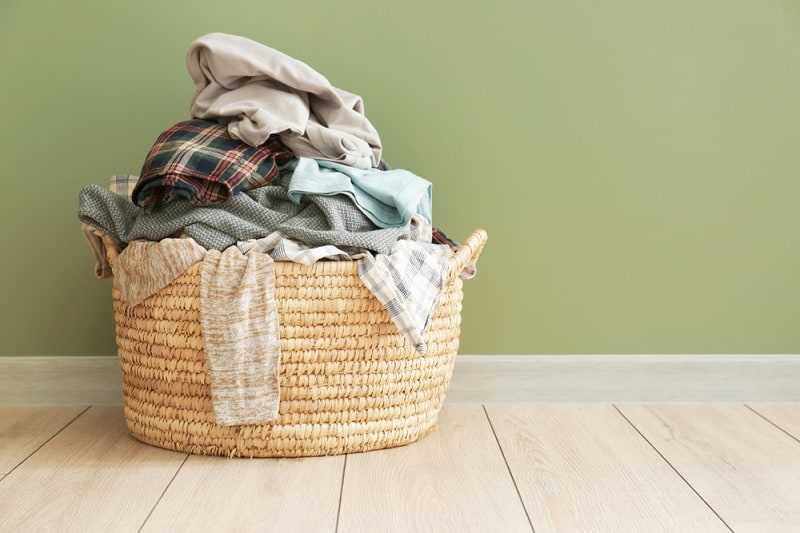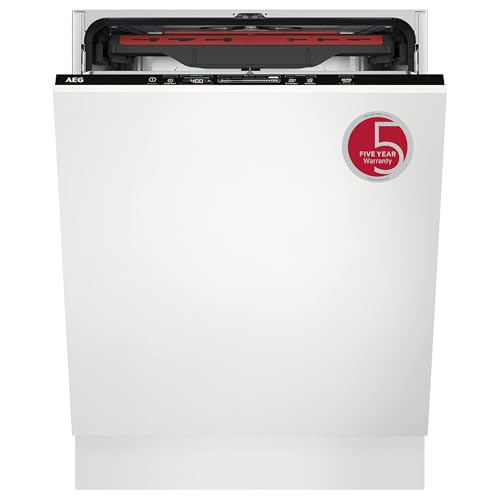




When you buy a new item of clothing, you may notice that there is a care label attached to it, which provides instructions on how to best care for the garment. One common instruction you may come across is to “wash with like colours.” But what does this actually mean?
Washing with like colours refers to the practice of grouping together clothing items in a wash load that have similar colours. For example, if you have a load of laundry that consists of various shades of blue, it is recommended to wash these items together to minimize the risk of colours bleeding or transferring onto other garments.
This instruction is particularly important for garments that are made from materials that are prone to bleeding, such as denim or dark-coloured clothing. By washing these items separately or with similar colours, you can help prevent dye transfer and maintain the original appearance of the garments.
Additionally, washing with like colours can also help to preserve the vibrancy and brightness of your clothing. Mixing colours that are too different may lead to the colours fading or becoming dull over time. By separating your laundry into similar colour groups, you can help ensure that each garment maintains its original colour intensity.
In conclusion, the instruction to “wash with like colours” on a care label is a crucial step in maintaining the quality and appearance of your clothing. By following this advice, you can prevent colour bleeding, maintain vibrancy, and extend the lifespan of your garments.
The Importance of Washing with Like Colours
In order to keep our clothes looking their best and to prevent them from fading or bleeding dye, it is important to follow the instructions on the care label, especially when it comes to washing with like colours. But what does it actually mean to wash with like colours?
Washing with like colours refers to the practice of sorting your laundry according to colour groups before putting them in the washing machine. This helps to prevent colours from bleeding onto each other and keeps your clothes looking vibrant for a longer period of time.
When you wash clothes that are similar in colour together, you reduce the risk of dark colours transferring and staining lighter colours. For example, if you wash a dark blue shirt with a white shirt, there is a high chance that the dark blue dye will bleed onto the white shirt, leaving it with a faint blue tint.
To ensure that you are washing with like colours, it’s a good idea to separate your laundry into the following groups:
- Whites and light colours: This group includes white clothing as well as light shades like pastels and pale yellows.
- Darks: This group includes dark colours like blacks, navy blues, and deep purples.
- Brights: This group includes bright and bold colours like reds, oranges, and yellows.
By separating your laundry into these colour groups, you can wash them together without worrying about colours bleeding or fading. Additionally, it’s important to make sure that you are using the appropriate temperature and laundry detergent for each colour group to achieve the best results.
Remember, washing with like colours not only helps to maintain the appearance of your clothes, but also extends their lifespan. So the next time you do laundry, take a moment to sort your clothes and wash with like colours. Your clothes will thank you!
Protecting Your Clothes

Washing your clothes properly can help lengthen their lifespan and keep them looking their best. Here are some tips on how to protect your clothes:
1. Sort clothes by colours
One way to protect your clothes while washing is to sort them by colours. This means separating your whites, darks, and colours into separate loads. Washing different colour groups separately can help prevent colour bleeding and keep your clothes looking vibrant.
2. Follow the care label instructions
Make sure to read and follow the care label instructions on your clothing items. The care label provides important information on how to properly wash and care for the garment. Following these instructions can help prevent damage and keep your clothes looking their best.
3. Use a gentle or delicate cycle
For delicate or sensitive fabrics, using a gentle or delicate cycle on your washing machine can help protect them from being stretched or damaged. This cycle typically uses slower agitation and lower spin speeds, which is gentler on your clothes.
4. Use mild detergent
Using a mild detergent can help prevent damage to your clothes, especially for delicate fabrics. Harsh detergents can cause colours to fade or fabrics to become worn out. Look for detergents that are labelled as gentle or suitable for delicate fabrics.
5. Avoid overloading the washing machine
Overloading the washing machine can cause clothes to rub against each other, leading to increased friction and potential damage. Make sure to leave enough space for your clothes to move around freely in the machine. It’s better to do multiple smaller loads than one large, overloaded load.
6. Use cold water for dark colours
To help preserve the colour of dark clothes, it’s best to wash them in cold water. Hot water can cause colours to fade or bleed. Cold water also helps to minimize shrinkage for certain fabrics. However, always check the care label instructions for specific temperature recommendations.
7. Air dry delicate items

Avoid using a dryer for delicate or sensitive items. Air drying is a gentler option that can help prevent shrinkage, stretching, or damage to the fabric. Lay the garments flat or hang them up to dry to help maintain their shape.
8. Store clothes properly
When storing your clothes, make sure they are clean and completely dry. Fold them neatly or hang them up in a well-ventilated area. Avoid using wire hangers as they can leave marks or cause the fabric to stretch. Using garment bags can also help protect your clothes from dust and pests.
By following these tips, you can help protect your clothes and extend their lifespan, keeping them looking great for longer.
Maintaining Color Vibrancy
Washing clothes with like colors is not just about preventing color bleeding; it is also about maintaining the vibrancy of your clothes. Here are some tips to help you keep the colors of your garments looking vibrant:
- Sort your laundry: Before washing your clothes, sort them based on color. This will prevent color bleeding and ensure that each load of laundry receives the proper care.
- Use cold water: Washing your clothes with cold water can help preserve the color vibrancy. Hot water can cause colors to fade or bleed, so opt for a cold water cycle when possible.
- Turn clothes inside out: Turning your clothes inside out can help protect the color from fading or getting damaged during the washing process. This way, the outer fabric is less exposed to direct contact with other garments and the washing machine drum.
- Choose the right detergent: Use a detergent specifically formulated for colored clothes. These detergents are designed to protect the colors and prevent fading.
- Avoid overloading the washing machine: Overloading the washing machine can lead to inefficient cleaning and can cause the colors to rub against each other, resulting in fading or color transfer.
- Avoid harsh chemicals: Avoid using bleach or harsh chemicals on colored clothes, as they can strip away the color and cause fading. Instead, opt for color-safe alternatives.
- Air dry whenever possible: Heat from the dryer can cause colors to fade. Whenever possible, air dry your colored garments to help preserve their vibrancy.
By following these tips and washing your clothes with like colors, you can help maintain the color vibrancy of your garments for longer, keeping them looking bright and beautiful.
What Does “Wash With Like Colours” Actually Mean?
When you see the label on your clothing that says “wash with like colours”, it means that you should separate your laundry into different loads based on the colours of the garments. This is important because certain dyes can bleed or run in the wash, causing colour transfer and potentially ruining the appearance of your clothing.
Here are some guidelines to follow:
- Separate the whites: Wash white clothing separately from coloured clothing. This helps prevent any stray colours from bleeding onto your pristine whites.
- Separate darks and lights: Divide your coloured clothing into two categories: dark colours and light colours. Washing dark and light colours separately will help prevent any colour bleed or dye transfer between them.
- Sort by fabric type: In addition to separating by colour, it may also be beneficial to separate your laundry by fabric type. Delicate fabrics like silk or lace should be washed separately from more durable fabrics like cotton or denim to avoid any damage or tearing.
- Check care instructions: Always read the care instructions on your clothing labels before washing. Some garments may have specific washing instructions that may differ from the general “wash with like colours” guideline.
Benefits of washing with like colours:
- Preservation of colour: Washing with like colours helps to maintain the vibrancy and integrity of the colours in your clothing.
- Prevention of colour transfer: By separating your laundry, you can avoid discolouration and ensure that your lighter-coloured garments stay looking fresh.
- Increased garment longevity: Properly sorting and washing your clothing can help prolong its lifespan, as it reduces the risk of damage or fading caused by conflicting colours.
Following the “wash with like colours” guideline can help keep your clothing looking its best and prevent any unwanted colour mishaps. Taking the time to separate your laundry can save you from potential frustration and disappointment when it comes to the appearance and longevity of your garments.
Remember to always err on the side of caution and follow any specific care instructions provided by the clothing manufacturer.
Sorting Your Laundry Properly
Sorting your laundry properly is an essential step in maintaining the quality and longevity of your clothes. By separating your garments based on their color, fabric type, and level of dirtiness, you can prevent any potential damage or color bleeding during the washing process. Here are some tips on how to sort your laundry effectively:
Sort by Color
One of the most critical factors to consider when sorting your laundry is color. Sorting your clothes into light and dark color groups helps prevent color bleeding. The basic rule is to wash whites, pastels, and light-colored garments together, while dark-colored items should be washed separately. This separation helps ensure that the colors stay vibrant and do not transfer onto other clothes.
Sort by Fabric Type
Another important aspect to consider is the fabric type. Delicate fabrics such as silk, lace, and wool require extra care and should be washed separately or placed in a mesh laundry bag to avoid damage. Heavier fabrics like denim or towels can withstand more vigorous washing, so they can be grouped together.
Sort by Dirtiness Level
Sorting your laundry by the level of dirtiness is another effective way to ensure proper cleaning. Clothes with heavy stains or that are particularly soiled should be washed separately from lightly soiled garments. By separating heavily soiled items, you can adjust the washing cycle and use appropriate stain removal methods without risking damaging other clothes.
Sorting Chart for Reference
| Type | Color | Fabric Type | Dirtiness Level |
|---|---|---|---|
| Group 1 | White, pastel, light-colored | Delicate fabrics: silk, lace, wool | Heavily stained/soiled |
| Group 2 | Dark-colored | Denim, heavy fabrics | Moderately stained/soiled |
| Group 3 | Lightly stained/soiled |
By using this sorting chart as a reference, you can easily categorize your laundry and ensure each load is washed correctly.
Remember: do not overload the washing machine and always check the care labels on your clothes for specific washing instructions.
Following these sorting guidelines will help keep your clothes looking their best and increase their lifespan, saving you time and money in the long run. Happy laundry sorting!
Preventing Color Transfer
Color transfer occurs when colors from one garment bleed onto another during the washing process. This can be particularly problematic when washing dark or brightly colored clothing with lighter items, as it can cause the lighter items to become discolored or stained.
To prevent color transfer, follow these guidelines:
1. Sort your laundry
- Separate your laundry into different piles based on color.
- Wash white items separately from colors.
- If possible, separate dark and brightly colored items from lighter colors.
2. Use cold water
Washing your laundry in cold water can help prevent color bleeding. Cold water is less likely to cause dyes to run compared to hot water.
3. Turn clothes inside out
Turning your clothes inside out before washing can help protect the outer layer of fabric from coming into direct contact with other garments, reducing the chance of color transfer.
4. Use the appropriate laundry detergent
Choose a detergent specifically designed to prevent color transfer. Look for detergents labeled as “color-safe” or “color-protecting.”
5. Avoid overloading the washing machine
Do not overcrowd your washing machine. Overloading can restrict water flow and increase the likelihood of color bleeding.
6. Check garments for colorfastness
Before washing a new garment for the first time, test for colorfastness. Dampen a small area of the fabric and blot it with a white cloth. If any color transfers to the cloth, the garment may bleed and should be washed separately.
By taking these precautions, you can help prevent color transfer and keep your clothing looking vibrant and fresh.
Expert Advice on Washing with Like Colours
When it comes to doing laundry, one common instruction you may see on clothing tags is to “wash with like colors.” But what does that actually mean? And why is it important? Here, we’ll provide you with expert advice on washing with like colors, so you can keep your clothes looking their best for longer.
Why Should You Wash with Like Colors?
Washing with like colors simply means separating your laundry based on the colors of the clothing items. The main reason for doing this is to prevent color bleeding and fading. When different colored clothing items are washed together, there’s a risk that the dye from one item may transfer onto another. This can cause your clothes to become discolored and ruin their appearance.
By washing with like colors, you can minimize the risk of color bleeding and keep your clothes looking vibrant and fresh for longer. Additionally, it can help to preserve the longevity of your clothes by preventing excessive wear and tear caused by friction between different fabrics and colors.
Tips for Washing with Like Colors
Here are some expert tips to help you effectively wash your clothes with like colors:
- Separate your laundry into piles based on color groups such as whites, lights, darks, and brights.
- Turn your garments inside out before washing to further reduce the risk of color transfer.
- Use cold water for washing, as hot water can worsen color bleeding.
- Choose a laundry detergent that is specifically designed to help prevent color fading and bleeding.
- Avoid overloading your washing machine to ensure that the water and detergent can circulate properly.
- If you’re dealing with stubborn stains, pre-treat them before washing to improve the chances of successful stain removal.
- Follow the care instructions on the clothing labels to ensure the best washing method for each garment.
- Consider investing in color-catching laundry sheets or detergents that can absorb any color bleeding during the wash cycle.
By following these tips, you can maintain the quality and appearance of your clothes while also prolonging their lifespan. Washing with like colors may seem like an extra step, but taking this precaution can save you from the disappointment of ruined clothes and keep your wardrobe looking its best.
FAQ
What does the phrase “wash with like colours” mean?
The phrase “wash with like colours” means that you should only wash items of similar colours together. For example, you should wash whites with whites, dark colours with dark colours, and so on.
Why is it important to wash with like colours?
It is important to wash with like colours because different coloured fabrics can bleed colour when washed, causing staining or discolouration. By washing similar colours together, you can prevent this from happening and keep your clothes looking their best.
Can I wash whites with light colours?
While it is generally safe to wash whites with light colours, it is still recommended to separate them if possible. Light coloured fabrics can sometimes bleed colour, and this may cause some slight discolouration to your whites. To be on the safe side, it’s best to keep whites separate.
What happens if I don’t wash with like colours?
If you don’t wash with like colours, there is a risk of colours bleeding and staining other garments. For example, if you wash a red shirt with a load of whites, the red dye may bleed and turn your white clothes pink. It’s always best to follow the care labels and wash instructions to avoid these issues.













